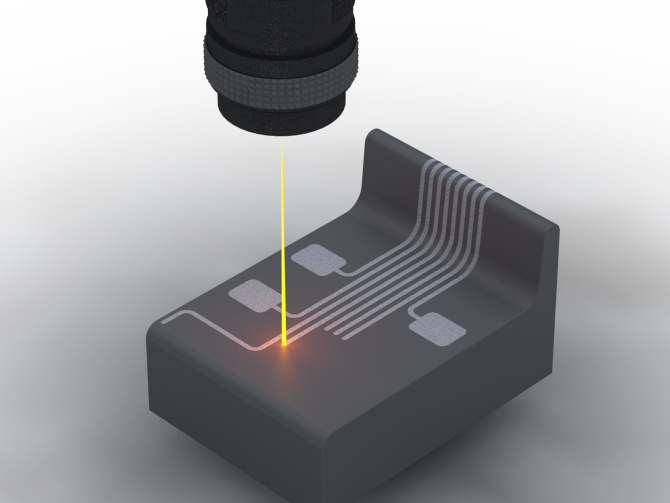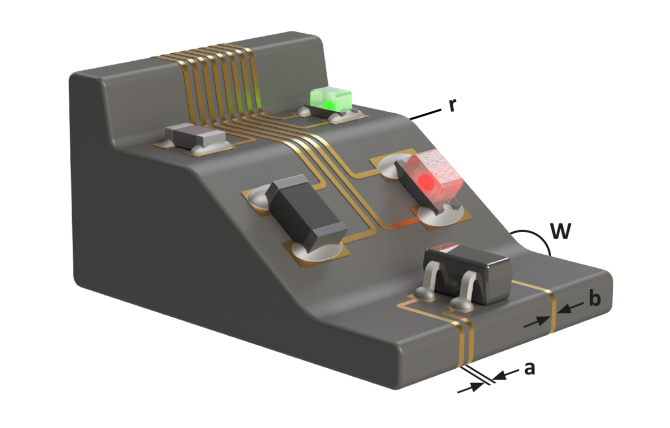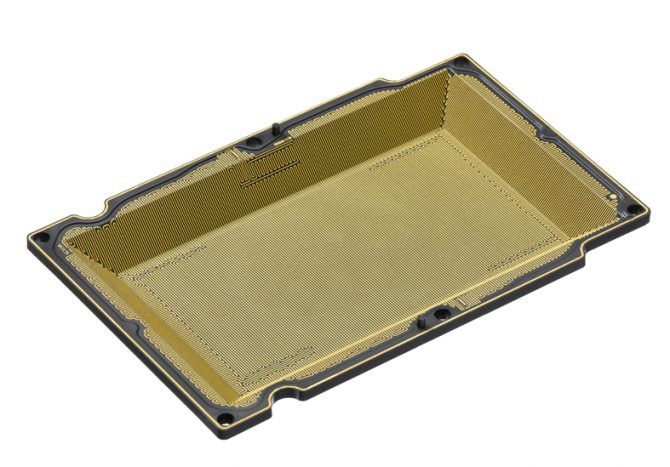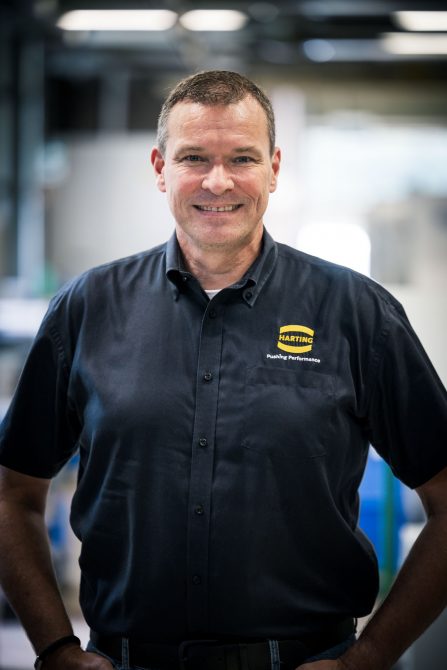Laser direct structuring (LDS) is a exclusive accomplishment story. For just about 20 yrs, it has been probable to implement digital conductor paths right on to plastic sections in the course of sequence creation. LDS permits the manufacturing of digital assemblies with versatile geometric shapes. This approach enables electronic goods (these types of as sensible telephones, sensors or professional medical devices) to develop into even lesser and more highly effective. Automated producing processes also make this procedure additional economically appealing.
There is less and considerably less area out there for electronic assemblies, so options are required which change typical printed circuit boards. LDS enables further miniaturization and makes increasingly complicated geometric patterns possible. This is a stable and responsible course of action that has proven by itself in high quality-critical sectors such as clinical technology or security-related elements for the automotive industry.
LDS approach permits three-dimensional assemblies
Immediate laser structuring enables 3D-MID (Mechatronic Integrated Products) assemblies to be made. When applying 3D-MID, electronic elements can be equipped straight onto a a few-dimensional base physique, devoid of circuit boards or connecting cables. The foundation entire body is created utilizing an injection moulding system, whereby the thermoplastic product has a non-conductive, inorganic additive.

The composition of the conductor route is used employing the LDS system.
LDS enables electronic assemblies to be created in versatile geometric shapes. Wise telephones, listening to aids and smart watches are starting to be lesser and far more impressive thanks to this method. Source: Harting
The additives in the substance are “activated” by immediate laser structuring so that the plastic substance can accommodate the electrical conductor paths. The laser beam writes the parts meant for the conductor paths and generates a micro-rough composition. The unveiled metal particles sort the nuclei for the subsequent chemical metallisation. In this way, the electrical conductor paths are applied to the spots marked by the laser. The other parts of the three-dimensional base system keep on being unchanged. The plastic element can then be assembled in regular SMD procedures identical to a typical PCB. It is also appropriate for soldering in a reflow oven.
Multipurpose software of laser technological innovation
As just one of the greatest suppliers of 3D-MID parts outdoors of Asia, HARTING utilizes substantial-functionality laser devices for the LDS course of action, with three lasers working in parallel, every single offset by 45 degrees. Many thanks to an supplemental axis of rotation, elements can be processed by the laser concurrently from all sides (360 degrees). This technological know-how permits flexible geometric shapes, such as reflector shells or LED lights, to be manufactured. In spite of the minimum conductor route thickness of 16 to 20 μm, the conductor paths are even now suited for demanding automotive elements or for applications with currents up to 10 A – for case in point for heating coils in cameras which are applied to avert the optics from fogging up

Minimum distances in between the conductor paths (a): 50 – 150μm. Minimum amount width of the conductor paths (b): 50 – 150μm Radius (r): .2mm. Resource: Harting
Regular alterations throughout the electronics improvement phase or new elements with modified proportions can lead to expensive adjustments for the duration of regular PCB output. The laser structure, in distinction, can be tailored pretty flexibly by utilizing the parameters of the laser’s regulate software package. No modifications in the injection moulding are needed for this.
The generation of prototypes utilizing LDS is also a lot easier in comparison to standard processes. HARTING can produce the plastic base system utilizing LDS-suitable product and 3D printing. Injection moulding can also be employed with cheap prototype tools.
New developments in the LDS process
A number of features of LDS technological innovation have been improved and more designed around the past handful of years.
- The doing work space of the laser has been enlarged from 160 x 160 x 80 mm to 200 mm x 200 mm x 80 mm, as a result enabling a higher packing density and the processing of even larger sized parts.
- The performing pace of the laser can be doubled to 4 m/s by optimizing the servo units and mirrors which guide the laser beam, thus substantially decreasing the processing time.
- The improvement of the optics allows the use of a laser with a diameter of 100 μm and a laser with a great emphasis of 50 μm for processing even scaled-down constructions.
HARTING is the only 3D-MID company in the earth that has a laser system with three fantastic aim optics of 50 μm. Even smaller conductor path gaps can be accomplished thanks to this fantastic aim laser. Hence, a lot of conductor paths can be designed on the exact ingredient and a larger packing density can be executed. This is made use of for safety technological innovation, among the other things, because the intently spaced and intertwined conductors are able of triggering protection alarms from even the smallest bodily interference.
Improvements in supplies and economics
Only specially selected thermoplastics are accredited for the LDS course of action these are obtainable from stock. The process can be even further improved with client-specific adjustments to the plastic content:
- HARTING works by using a system which adds LDS additives to non-qualified components to make them MID-suitable.
- Specific RAL or Pantone colours can be attained with MID plastics by working with color pigments and specific LDS additives.
- By deciding upon ideal additives, distinctive RF traits can also be implemented, relying on the frequency vary.

Electronic components – this kind of as LEDs, ICs, photodiodes and sensors – can be attached right on to the element provider. The assembled part carriers can then be processed as common SMD factors. Source: Harting
To further more enhance the value-effectiveness of the production course of action, HARTING depends on automatic robotic techniques. The LDS laser technique is equipped with a rotary indexing table so that a part can be inserted or taken off while one more element is nevertheless being processed. The in-feed and unloading treatments are automated by HARTING using robotics. This increases throughput and autonomy, even though also enabling integration into automated generation procedures. An extra automation action is provided all through the injection moulding process. In this article, much too, a robotic takes above the removal of the injection moulded elements. The use of robotics also increases the precise reproducibility of the procedures and, hence, over-all solution top quality.
Extra expansion for 3D-MID

The 3D-MID caps guard the electronics from unauthorized accessibility each mechanically and electronically. A hugely exact meandering construction detects just about every entry, no issue how compact, and as a result stops theft. Source: Harting
HARTING reviews greater desire for MID projects and has even further expanded the 3D-MID division by investing in equipment and by buying a competitor’s business enterprise. Innovative in-property products and solutions are also contributing to even further progress. HARTING has developed a option dependent on 3D-MID engineering which replaces flexible PCBs with a part carrier. In its place of utilizing a flex-PCB, the element carrier can be fitted directly with digital parts, hence conserving up to two thirds of the charge.
—————————————-
About HARTING 3D-MID
HARTING 3D-MID is offering the entire worth chain for 3D-MID systems from a one resource, including development/prototyping of customer-specific solutions, injection moulding, laser direct structuring, metallization, assembly and relationship know-how, as well as ultimate inspection. Its core organization is the production of mechatronic factors for automobile manufacturing, industry, healthcare engineering and sensor units.

Dirk Rettschlag, venture supervisor & IE MID at Harting MID.
